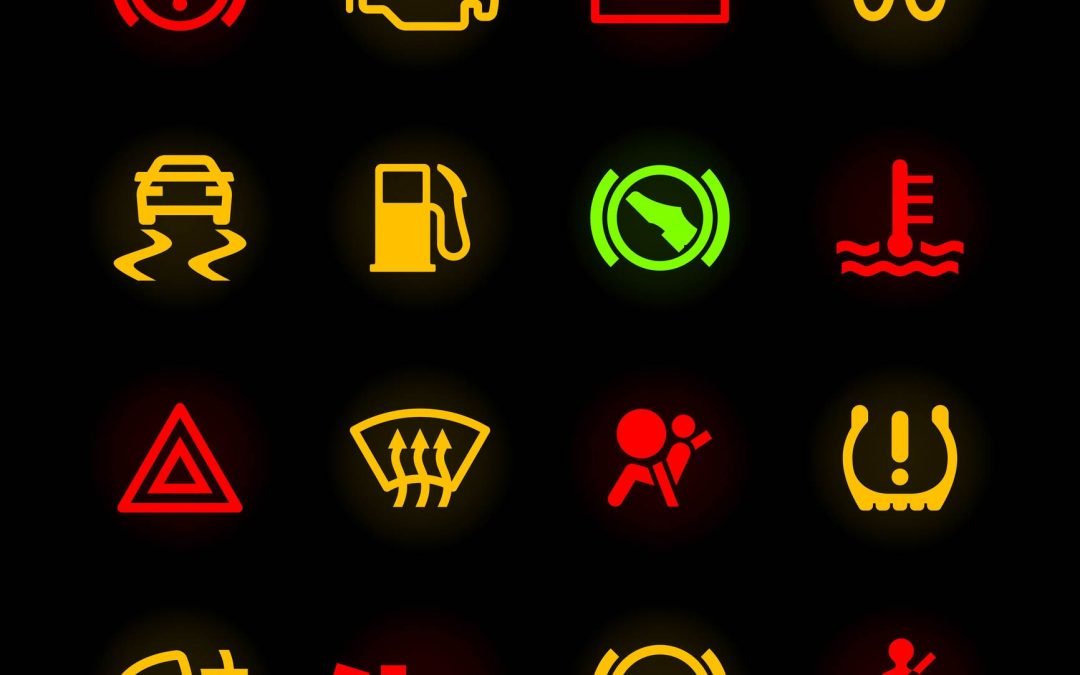Dashboard warning lights are an essential part of any vehicle’s safety system. They alert drivers to potential problems and provide crucial information about the vehicle’s condition. However, these warning lights can be confusing and intimidating, especially for new drivers. In this blog post, we’ll discuss the meaning of dashboard warning lights and provide a guide to understanding your vehicle’s signals.
Types of Dashboard Warning Lights
There are several types of dashboard warning lights, and each serves a specific purpose. Here are some of the most common types of dashboard warning lights:
- Check Engine Light: The check engine light indicates that there is a problem with the vehicle’s engine or emission control system. This light is often yellow or orange and may be accompanied by other warning lights.
- Oil Pressure Warning Light: The oil pressure warning light indicates that there is low oil pressure or an issue with the oil system. This light is often red and should be taken seriously.
- Battery Warning Light: The battery warning light indicates that there is a problem with the vehicle’s charging system. This light is often red and should be addressed as soon as possible.
- Brake Warning Light: The brake warning light indicates that there is a problem with the brake system. This light is often red and should be taken seriously.
- Tire Pressure Warning Light: The tire pressure warning light indicates that one or more tires have low pressure. This light is often yellow and can help prevent flat tires and other tire-related problems.
Understanding Warning Light Symbols
In addition to the different types of warning lights, there are also various symbols that can help drivers understand the severity of the problem. Here are some of the most common warning light symbols and what they mean:
- Thermometer Symbol: This symbol indicates that the engine is overheating and needs immediate attention.
- Wrench Symbol: This symbol indicates that there is a problem with the vehicle’s maintenance or service schedule.
- Gas Pump Symbol: This symbol indicates that the vehicle is low on fuel and needs to be refueled.
- Lock Symbol: This symbol indicates that there is a problem with the vehicle’s security system.
- ABS Symbol: This symbol indicates that there is a problem with the vehicle’s anti-lock brake system.
Conclusion
Dashboard warning lights are an essential part of any vehicle’s safety system. By understanding the different types of warning lights and symbols, drivers can take appropriate action to address any problems with their vehicles. Remember to always take warning lights seriously and seek professional help if necessary. Staying on top of your vehicle’s maintenance and paying attention to warning lights can help keep you and your passengers safe on the road.
Join 500,000 drivers who use a DriveSafe Online defensive driving course to receive an auto insurance discount or to dismiss a traffic ticket.
Whether you need to clean up your driving record to satisfy court requirements and improve your standing with your insurance provider, or you want to lower your auto insurance rate, a DriveSafe Online defensive driving course completion certificate could be worth hundreds of dollars in discount savings on your insurance premium.
DriveSafe Online can also help businesses get fleet drivers safety certified in as little as 60 minutes. DriveSafe Online fleet driver safety courses are designed to help decrease employee downtime, increase workforce productivity, and prevent costly accidents before they happen. Whether employees drive company vehicles or their personal cars to complete business tasks, training your drivers is smart business.
Select I’M READY to lock in your low course price now. You can begin the course whenever your schedule allows.

Patrick M. is Editorial Director for the always expanding DriveSafe Online library of courses. With over two decades of experience developing award-winning training, he now focuses on innovating online driver safety training. Pulling from his background in journalism, he steers the wheel behind the creation of top-tier content that promotes a better journey—whether on the digital highway of learning or the real roads we travel every day.
